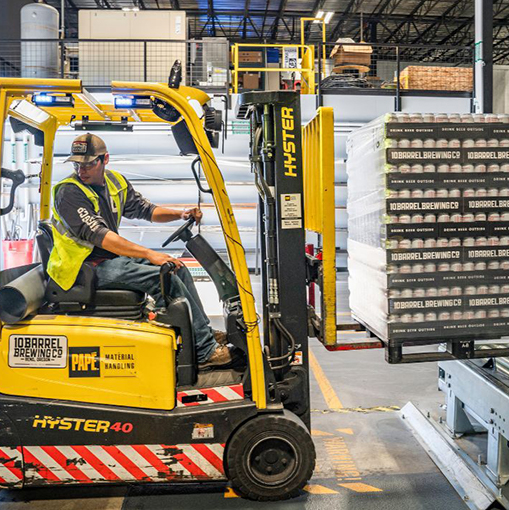
Forklift safety training is of paramount importance for both Heavy-Duty Vehicles (HDV) and Light-Duty Vehicles (LDV) operations. The operation of forklifts presents inherent risks and challenges, which can have severe consequences if not properly managed. Therefore, an extensive and comprehensive forklift safety training program is indispensable to ensure the safety of personnel, equipment, and surrounding environments. This training equips operators with the knowledge and skills necessary to handle forklifts with precision and caution, reducing the likelihood of accidents and potential injuries. Moreover, it instills a culture of safety within the workplace, emphasizing the significance of adhering to established safety guidelines and protocols. In summary, forklift safety training, whether for HDVs or LDVs, stands as a critical component in the pursuit of a safe and efficient working environment, promoting not only the well-being of operators but also the overall productivity and operational effectiveness of the organization.
Scope (Target Audience):
The Course is designed for experienced forklift truck operators and their supervisors.
Objective:
At the end of the course the driver should be able to –
Structure of the Course (Course Content)
The syllabus covers:
Assessment:
Theory
There will be interactive class discussion and verbal questioning throughout each lesson. There
will be a written examination in the form of a multiple choice paper, on which there will be not
less than 4 possible answers to each question.
The questions and answers will be written using simple English language to be easily understood
by persons who do not use English as a first language.
Practical
The practical operating session will be assessed with respect to measurement of the objectives
and their subsets. The operator may be asked simple questions periodically in relation to the
operating environment. Briefings will be given relating to specific tasks to be achieved whilst
operating. Each operator must be able to successfully perform each of these tasks in order to be
recorded as competent.
Prerequisite:
Valid UAE license
Validity:
2 years
Certification & Approvals:
Certificate issued.
Course Duration:
1-day comprising- theory and practical
Maximum Number of Delegates
Minimum 5, Maximum 8 delegates
Venue
Theory
The theory class can be held at Belhasa Advanced Motorist Department Centre. Or at clientsown premises if preferred
The classroom at BAM has comfortable seating arrangements for all delegates, with all normal
modern teaching facilities, i.e. computer with necessary peripherals, data projector and/or
plasma wide-screen TV, whiteboard, etc.
In the case of the Client providing the classroom, it is assumed that similar facilities will be
provided.
Practical
The client shall provide a suitable training area within their facility, having a suitable surface, in a
safe location away from other work, which may be separated by barrier from other workers or
vehicles, where pallets or other items may be moved and stacked.
Forklift:
The Client shall provide the fork lift truck to be used for the practical sessions of operator
training.
The Fork lift shall be registered and insured in compliance with UAE law. The vehicle shall be in a
good and serviceable condition, with all parts fully functioning, have a seatbelt for the operator,
and at the commencement of each practical training day shall be fully fueled.
Other Equipment
12 road traffic cones are required in order to conduct the maneuvering and other exercises.
Quantity 10 wooden pallets approx. 1-meter square in good condition.
One long narrow load, e.g. pipe, length approx. 4 meters, where possible.
If equipment is unavailable, site inspection is required.
Dates and Cost:
On request.
Our Address
Our Mailbox
Our Phone
Copyrights 2025 © Alphah HSE,
Design & Developed by Swismax Solutions